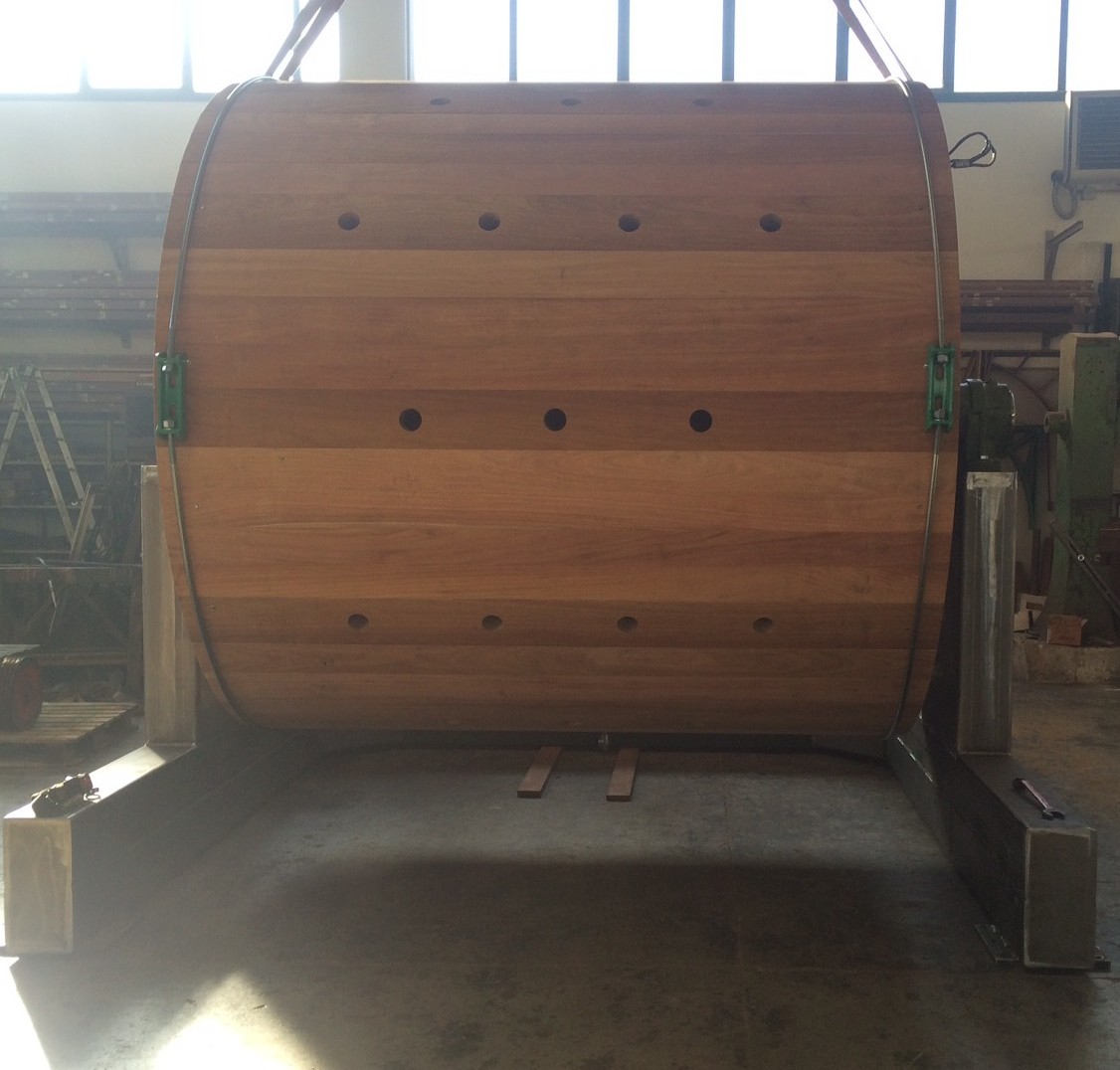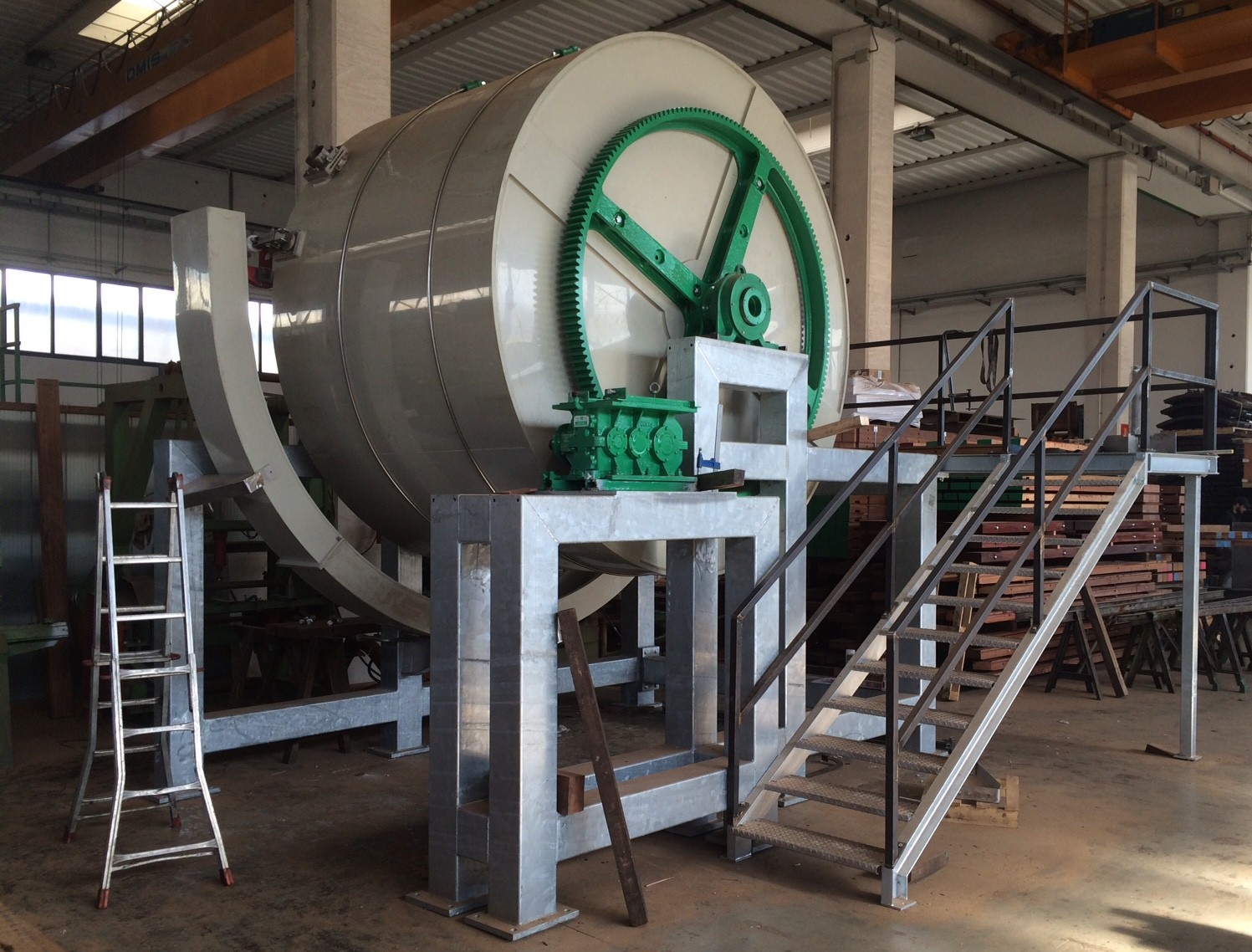Wood vs. Plastic: What’s Best for Leather Drum Dyers
Over 35 years ago, my father sold his first tanning drum out of his new leather servicing business. As I overheard my father discussing the details of the sale, it surprised me to discover the machine was wooden. A kid of no more than 10, I didn’t understand industrial machine manufacturing, but I did know most machines weren’t made of wood.
Our company sold a lot of drums over the next 30 years, probably more than 200 total. Every one of them was made of wood. Of course there were a few exceptions, a couple fiberglass drums operated in Wisconsin and Pennsylvania and a few stainless steel drums in Maryland. But still, the majority of tanneries used wood tanning drums for liming, tanning, and even retanning and dyeing.
Why Wood Machines Worked
This is old news but let’s go over it again. A wooden drum is cost effective and can be manufactured, disassembled, and shipped anywhere in the world in standard containers and reassembled as needed. It is easy to work, modify, and repair. It has a reasonable working life and in most cases some properties of the drum actually improve with age. The inside develops a glassy smooth patina sought after by the discerning tanner. Wood is durable against most chemicals found in the tannery, and retains heat well. Some wooden drum manufacturers have even gone so far as to take some of the credit for a nice piece of leather.
The Downside of Natural Material
Of course we know a wooden drum will eventually rot away. Moisture, insects, chemicals, grain defects, and mechanical action will take their toll. Finding a nice supply of old growth rainforest teak is becoming a challenge. It’s expensive, unpopular with the younger set, and increasingly hard to find. Once found, this wood should be rough sawn and aged naturally (not kiln dried) for at least 2 years. Then, resawn and cut into a drum. This process leads to a lot of money tied up in wood for a company that wants to do it right!
Over the past 20 years, I’ve noticed a deterioration in the quality of wood as drum manufacturers struggle to maintain a sound wood supply. Farmed wood is not as suitable as old growth hardwood and it shows in the quality of drums some manufacturers are putting to market. Inventory shortfalls result in the need to resort to the use of a kiln to abbreviate the drying process. But here again, the end product suffers.
The Leather Industry Looks for Alternatives
Fiberglass and stainless steel drums are well known and have been around a long time. Fiberglass has a lower cost and long life but requires relocation to avoid fiber damage as the gel coat deteriorates. They don’t hold heat as well as wood and they don’t clean up as well as stainless steel. The stainless drums are great for retanning and dyeing where color change is an issue. Yet, they come at a premium and are subject to metal fatigue over time.
Plastic Breaks Into the Market 
This isn’t news…plastic drums have been around for years. But now it seems they have reached critical mass more buy-in. The first plastic drums faced criticism for being too small, too weak, breaking at seams, prone to chemical erosion, and other limitations. This scared off anyone who would be willing to try one. Today they are popping up all over the world and not just as small dyeing drums.
Manufacturers produce and ship drums with 3.5 meter diameter and larger. This shows us someone thinks it’s worth the cost and trouble of loading, shipping, and unloading such bulky cargo. Don’t forget once it shows up, it doesn’t just roll in through the front door. This being one of the main limitations, it has not been overcome so much as justified by the perceived added value of the plastic drum over wood. Where two large wooden tanning drums can ship in one standard container, the equivalent plastic drums ship by oversized ocean and land shipments at great cost. Plus, they won’t fit through the front door when they arrive, adding labor and time costs.
Improvements in plastic technology in general trickled down to the construction of tanning drums. Because of this, problems of breaking seams, shape memory, and chemical resistance is now avoidable. Drum makers use versions PPHD (high density poly propylene) or PEHD (high density poly ethylene), which are much better able to minimize or overcome some of the structural concerns of years past. The various manufacturers took improved raw materials and combined them with process innovations to evolve the technology into something attractive. Even for tanneries not having considered plastic drums 10 years ago.
Some design variations include the following techniques:
- A robust iron exoskeleton to improve size and capacity limits
- Double layers of plastic to increase thickness allowing diameters of up to 4 meters
- Improved plastic welding techniques for improved strength
- A perfectly smooth finish to avoid scuffing from mechanical action
- Plastic coated hardware, pegs, and shelves including oversized shelves to run slow speed, low float tannages
- Hybrid options which allow a tanner to convert an existing wooden drum into plastic by inserting a plastic liner (complete with shelves or pegs) into an older wooden drum
There’s no question that drum building is evolving. Plastic seems to be the next great thing for the leather industry. It offers ever-improving potential, but just like most innovations, plastic drums still make up only a small fraction of today’s market. We can see immediate advantages in buying a plastic drum such as cleanliness, durability, and consistency, but is this enough to pull the trigger to buy? We may be heading toward plastic but many are asking is too early to invest in the current technology. If limitations of price and shipping costs pan out, benefits will need to trump the cost. We need proof the actual longevity withstands as claimed by the manufacturers. Looking at it all, are we seeing a link in the chain in the evolution towards the future of drum making or have we already arrived?
Considering replacing drum dyeing equipment? Download our Refurbished vs. New Equipment Checklist to make sure you make the most informed decision.


